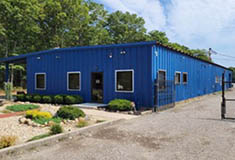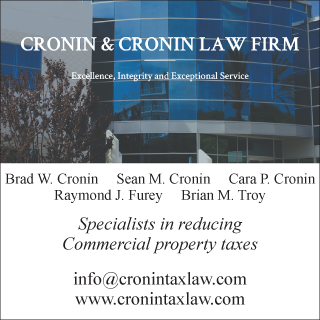Hunt Corp. Commercial Real Estate Q&A: Tenant expansion options

Hunt Corporate Services, Inc.
Q: What is the best way to allow space expansion capability in our lease negotiations?
A: Probably the most common lament that I hear one year after a tenant has occupied new space is that they are already contending with cramped quarters. Many tenants take too little space because of budget constraints, and too many ignore the space needs of the future. So, the concept of expansion options is an important one in lease negotiations for many companies. There are a variety of strategies that may be employed by a tenant to anticipate expansion needs in the future.
How clear is your crystal ball? Where are you likely to be three years from now? Five years? Accommodating several more employees is a far cry from doubling the production floor of a major manufacturer. And, there are some companies that have a very stable requirement for space, with no need for growth. So, get a firm handle on what your needs will be before you start negotiating.
While the ideal scenario is to have extra space “land-banked” by the landlord, this is unlikely in most office markets. Most landlords are not willing to forego rent on the extra space until you exercise your option, but in a triple-net industrial lease, a building with expansion capability might allow a landlord the ability to offer an expansion option by building an addition in the future. Some landlords may agree to a short-term version of this scenario, such as leasing extra space at a reduced rental for six months or a year.
Another gambit is to “master lease” more space than you need, and sublease out the excess space until such time as it is required. This, however, puts you firmly in the real estate business, with worries of your own regarding tenants and their payment of rent.
One option that should never be overlooked is a first right of refusal, or right of first offering, on adjacent space if you are in a multi-tenanted facility. This gives you “first shot” at space. The difficulty with this arrangement is that you control neither the timing nor the size of the available space. On the other hand, the option will generally cost you little, so you have nothing to lose.
The most common method of addressing the future need for space is to strike a balance between what is required today and the anticipated space needs of the future. In an office scenario, with flexible landscape partitioning, it is possible to draw a multitude of designs, or to design a future “hoteling” plan that will allow additional employees. In an industrial scenario, future growth is sometimes handled with high warehouse ceilings. Warehousing needs today are met with existing floor space, or perhaps two levels of racking. Future growth can be accommodated with additional levels of racking as well as materials handling equipment.
Any one, or combination of these ideas can be used to custom tailor an expansion plan for your company.
Do you have a question regarding commercial real estate? Email your question to Commercial Real Estate Q & A, at [email protected] for possible inclusion in a future column.
David Hunt, MCR, CCIM, SIOR is the president of Hunt Corporate Services, Inc., Plainview, N.Y.
Suffolk County IDA supports expansion of A&Z Pharmaceuticals


The evolving relationship of environmental consultants and the lending community - by Chuck Merritt
When Environmental Site Assessments (ESA) were first part of commercial real estate risk management, it was the lenders driving this requirement. When a borrower wanted a loan on a property, banks would utilize a list of “Approved Consultants” to order the report on both refinances and purchases.








.jpg)